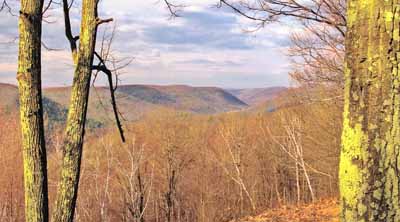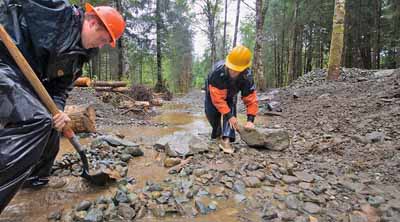What is the Future of Our Forests?
It is difficult to predict the future hold for our Nation’s forests, but we can be sure that forests will change due to an increasing population and shifting demands for the goods and services forests offer.
Forest Atlas Of The United States
It is difficult to predict the future hold for our Nation’s forests, but we can be sure that forests will change due to an increasing population and shifting demands for the goods and services forests offer.
The decisions made by private land owners and public land managers will be pivotal. In the eastern United States, forests are largely privately owned. Of all privately owned forests, a third are owned by corporations. In the western United States, forests are primarily owned by the public and are managed by state and federal land management agencies. Indeed, the notion that forests can be publically owned is an original American idea born during the nation’s westward expansion.
The proposal that lands can be managed for all of its people has served the country for over a century. The first head of the Forest Service, Gifford Pinchot, famously stated, “Where conflicting interests must be reconciled, the question shall always be answered from the standpoint of the greatest good of the greatest number in the long run.” Environmental laws like the National Environmental Policy Act and Clean Water Act help facilitate an acceptable balance between competing national priorities and play an important role in determining our forest’s future.
Projections for the next 50 years suggest development will be the greatest human-caused change in forests and will lead to an overall loss in forest land. This loss is important because forests serve many important ecological functions, not the least of which is as a carbon sink. Carbon is sequestered in live trees by converting carbon dioxide into wood and thus lessening the effects of greenhouse gasses. Currently, over 15 percent of all carbon dioxide emissions in the United States are sequestered by forests. Despite these mitigating effects, forests are projected to change from a net carbon sink to a net carbon emitter in future decades. In addition, the extent of forests and their composition will adapt to population pressures and environmental conditions, and trees in urban areas will be increasingly important to providing ecosystem services that are critical to quality of life.
The consequences of interactions between forests, people, and climate are complicated and not completely predictable. Ultimately it will be the owners of the land, both public and private, that will decide if and how they will react to these changes and shape our future forests.






FORESTS ARE ALWAYS CHANGING. Forests change due to both natural and human factors. Wildfire and flooding cause dramatic changes in forested ecosystems, whereas other factors create more subtle changes. In contrast, some forests can be actively managed for over a century and still maintain a natural character. Regardless of the situation, private land owners and public land managers will have a large role in determining how future forests look.
Consultants
Perry, C.H.; Finco, M.V.
General References
Millennium Ecosystem Assessment. 2005. Ecosystems and human well-being: a framework for assessment. Washington, DC: Island Press. 5 volumes. Available on-line at: http://www.unep.org/maweb/en/Framework.aspx
Photographs
NH hardwood forest: Daniel Sperduto for New Hampshire Division of Forests and Lands; creativecommons.org
Tioga state forest: Nicholas A. Tonelli, New Hampshire Hardwood Forest; wikipedia.org
Prescribed burn, WUI: US Fish and Wildlife Service; digitalmedia.fws.gov
Alaska Salmon watershed conservation project: Bridget Besaw, The Nature Conservancy; nature.org
Alaska glacier calving: Andrewman327; wikipedia.org
Mudslide, flood, because of forest fire: Boise National Forest, flickr.com